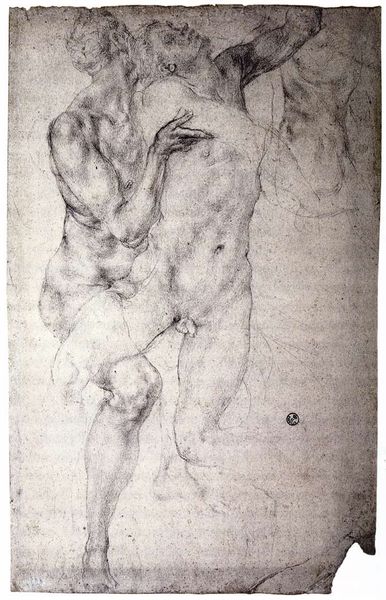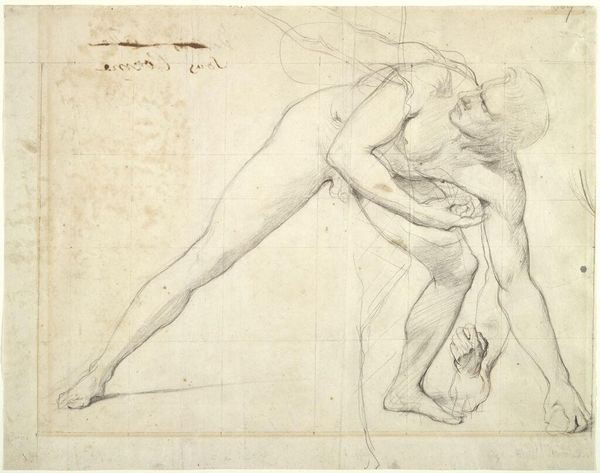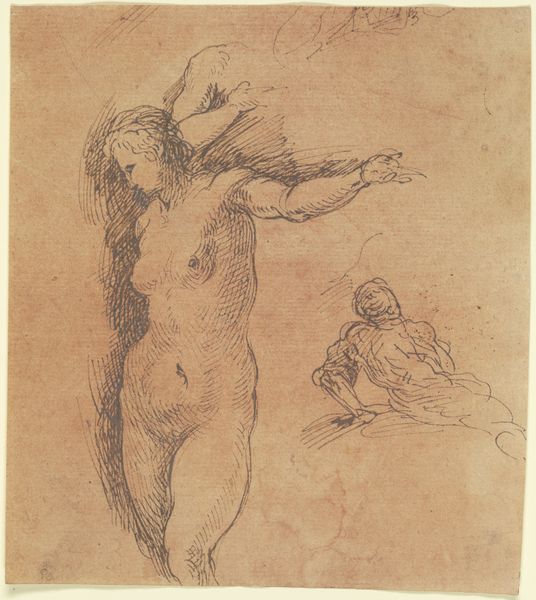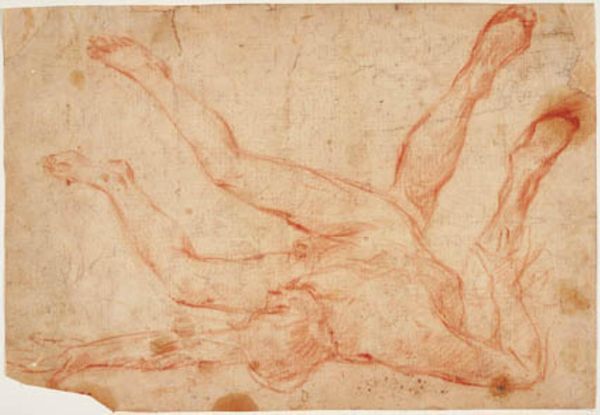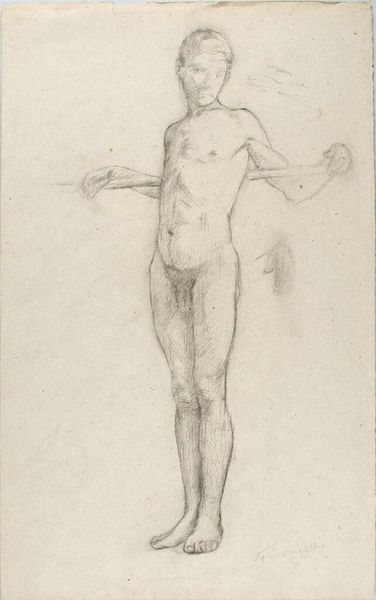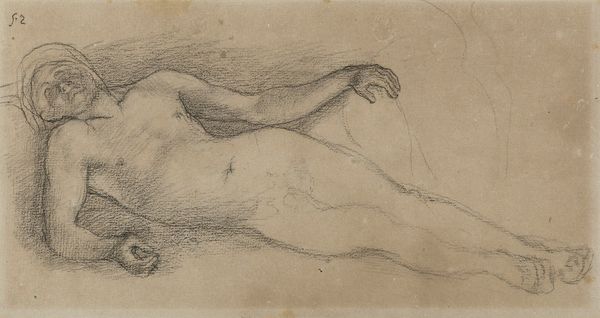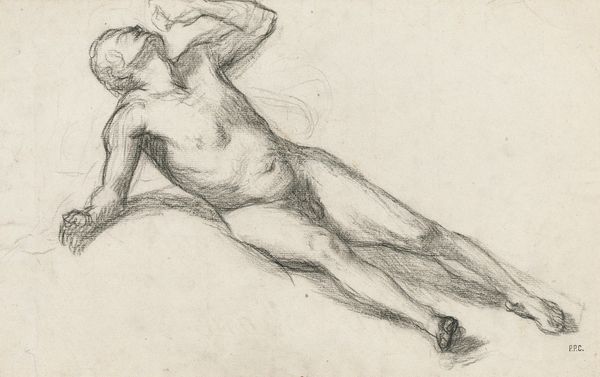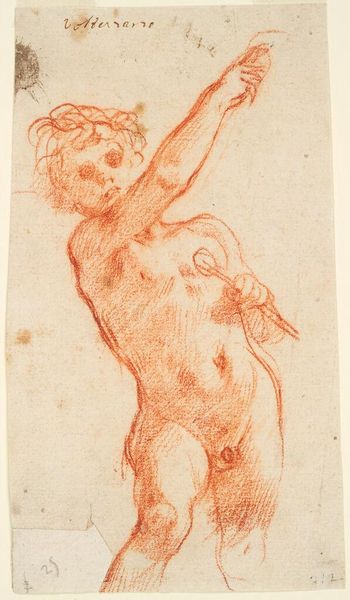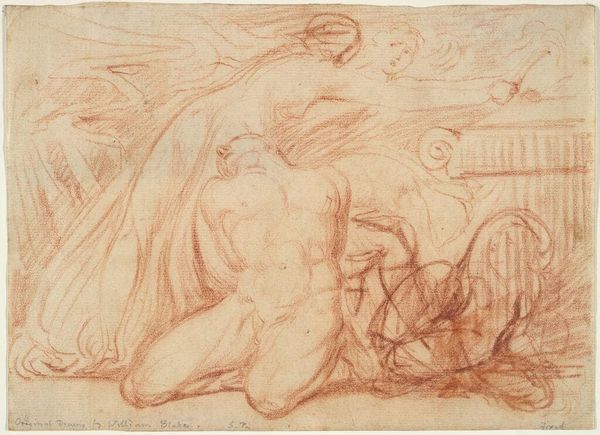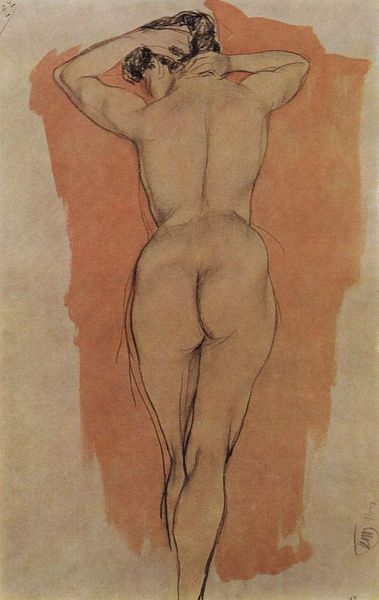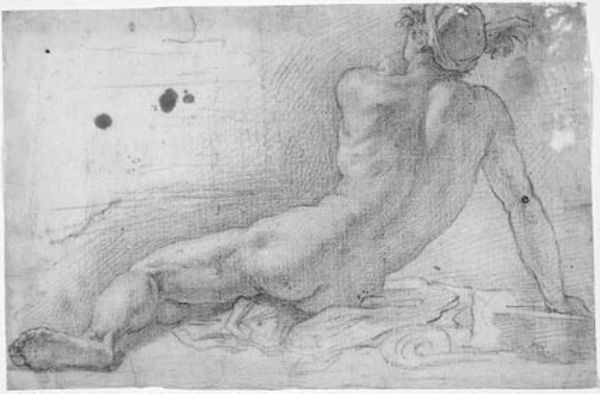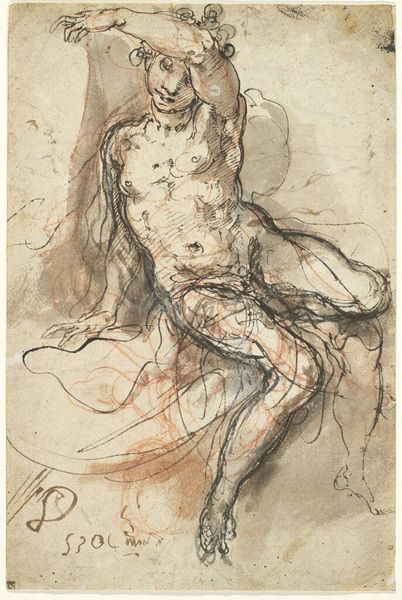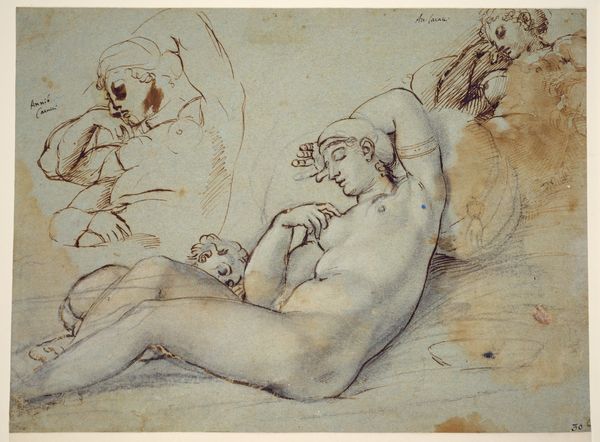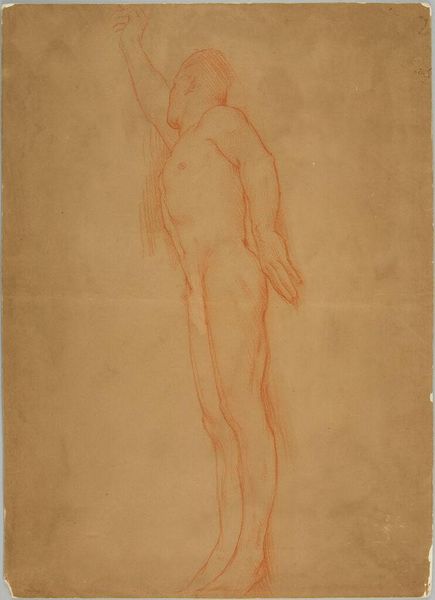
drawing, pencil, charcoal
#
drawing
#
charcoal drawing
#
figuration
#
11_renaissance
#
pencil
#
charcoal
#
history-painting
#
academic-art
#
italian-renaissance
#
nude
Dimensions: 30 x 19 cm
Copyright: Public domain
Curator: This is "Study of the Nailing of Christ to the Cross," a drawing created around 1523 by Jacopo Pontormo, currently residing in the Uffizi Gallery in Florence. Editor: The immediate impression is one of dynamic tension, despite the stillness. The angles are sharp, and the anatomical studies create a sense of anatomical realism and impending doom. Curator: Indeed, the work is comprised of both charcoal and pencil markings; the use of both suggests Pontormo’s intention for this drawing. Drawings such as this would allow him to conceptualize his compositions and ideas. Considering his large scale depictions and complex organization of space, creating such work became extremely important. Editor: Looking at the lines, there’s such a deliberate roughness. It's a sketch, yes, but one pushing at the boundaries of form, even threatening to break them entirely. Look at the use of foreshortening! It really emphasizes depth and draws our eyes to the implied action. Curator: His figures, too, seem caught in states of intense physical strain and emotional torment. We have to understand that artists like Pontormo often relied on workshops to grind pigments, prepare canvases, and even contribute to less significant areas of paintings. His works, too, reflect shifting political and religious currents. Editor: That’s fascinating! But the visual experience is powerful here. The raw, unfinished quality amplifies the emotional impact. We don't see a polished presentation, we witness the struggle of creation, the artist wrestling with the subject. And through the mastery of the artist, such rough markings create a clear depiction of torment. Curator: Precisely. The tension comes, I think, from seeing Christ caught between mortal hands and divine destiny. Considering what one puts into constructing such work, in all stages, one can only see it as being a monumental endeavor for any artist. Editor: Well said. It's a potent demonstration of the artist grappling with an immense subject, allowing viewers to engage directly with the pain and pathos inherent to the chosen moment. The sheer economy of means is startlingly effective.
Comments
No comments
Be the first to comment and join the conversation on the ultimate creative platform.
